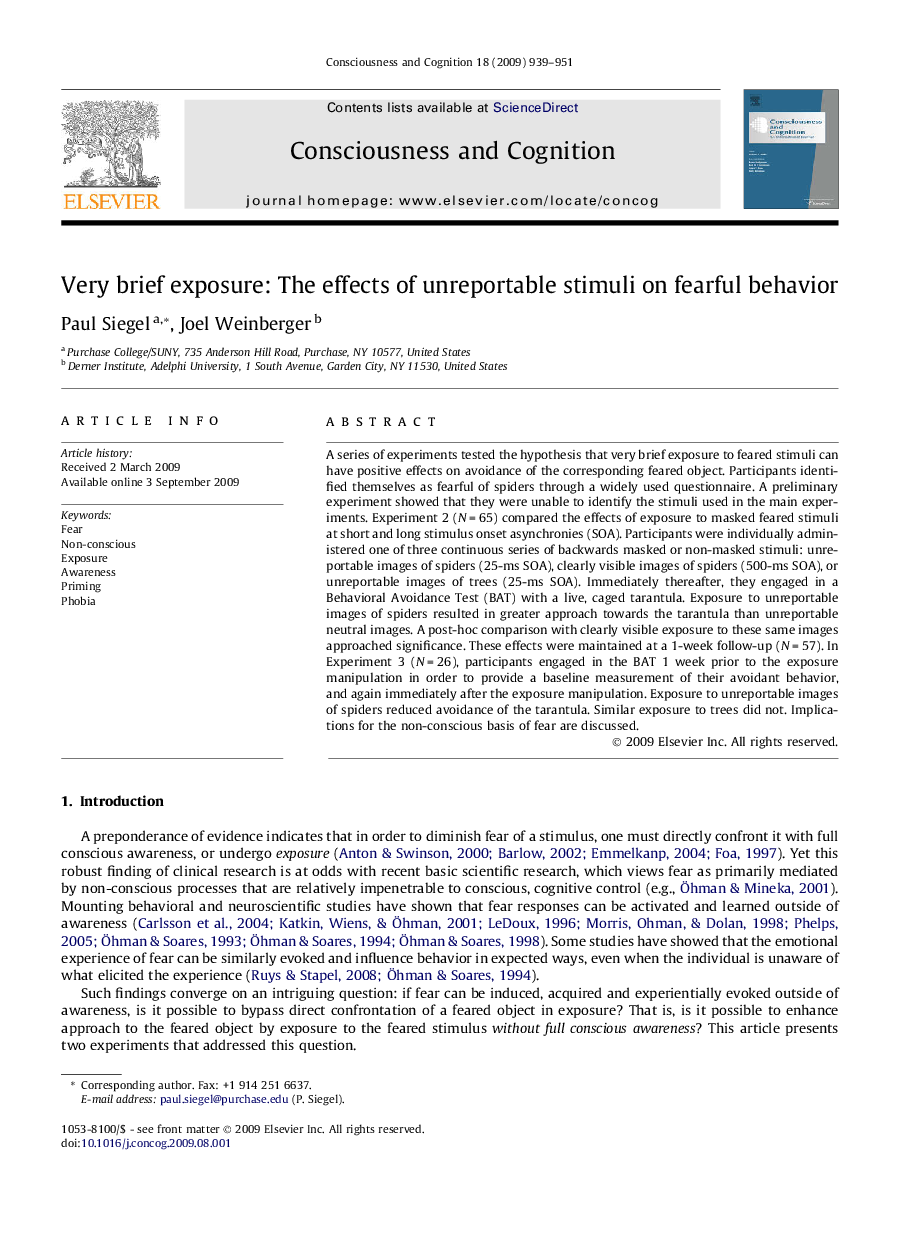| Article ID | Journal | Published Year | Pages | File Type |
|---|---|---|---|---|
| 10458737 | Consciousness and Cognition | 2009 | 13 Pages |
Abstract
A series of experiments tested the hypothesis that very brief exposure to feared stimuli can have positive effects on avoidance of the corresponding feared object. Participants identified themselves as fearful of spiders through a widely used questionnaire. A preliminary experiment showed that they were unable to identify the stimuli used in the main experiments. Experiment 2 (NÂ =Â 65) compared the effects of exposure to masked feared stimuli at short and long stimulus onset asynchronies (SOA). Participants were individually administered one of three continuous series of backwards masked or non-masked stimuli: unreportable images of spiders (25-ms SOA), clearly visible images of spiders (500-ms SOA), or unreportable images of trees (25-ms SOA). Immediately thereafter, they engaged in a Behavioral Avoidance Test (BAT) with a live, caged tarantula. Exposure to unreportable images of spiders resulted in greater approach towards the tarantula than unreportable neutral images. A post-hoc comparison with clearly visible exposure to these same images approached significance. These effects were maintained at a 1-week follow-up (NÂ =Â 57). In Experiment 3 (NÂ =Â 26), participants engaged in the BAT 1 week prior to the exposure manipulation in order to provide a baseline measurement of their avoidant behavior, and again immediately after the exposure manipulation. Exposure to unreportable images of spiders reduced avoidance of the tarantula. Similar exposure to trees did not. Implications for the non-conscious basis of fear are discussed.
Related Topics
Life Sciences
Neuroscience
Cognitive Neuroscience
Authors
Paul Siegel, Joel Weinberger,
